


Sugar soap is a cleaning product that is commonly used to prepare surfaces before painting or wallpapering. It is a highly effective cleaner that removes dirt, grease, and grime from various surfaces, making them ready for painting or decorating.
Unlike traditional soap made from animal or vegetable fats, sugar soap is made from synthetic detergents. It gets its name from the fact that it has a sweet, sugary appearance. Sugar soap is available in both liquid and powdered forms, and it is widely used in the construction and decorating industries.
Sugar soap is specifically formulated to be tough on dirt and grease, making it an ideal cleaner for preparing walls, ceilings, and other surfaces for painting. It effectively removes any residue, stains, or grease that may interfere with the adhesion of paint or wallpaper.
When using sugar soap, it is important to follow safety precautions. It is advisable to wear protective gloves and goggles to prevent contact with the skin and eyes. Additionally, it is crucial to ensure adequate ventilation in the area where sugar soap is being used, as it may produce harmful fumes.
In conclusion, sugar soap is an essential cleaning product for anyone involved in painting or wallpapering. Its powerful cleaning properties make it an effective solution for removing dirt, grease, and grime from surfaces, ensuring a smooth and durable finish. However, it is important to use sugar soap safely and responsibly, following the necessary precautions to avoid any potential hazards.
What Is Sugar Soap?
Sugar soap is a type of cleaning product commonly used for removing dirt, grease, and stains from surfaces before painting or wallpapering. It is called sugar soap because it contains a chemical compound called sodium carbonate, which is derived from sugar.
Sugar soap is available in both liquid and powder forms. The liquid form is typically used for general cleaning purposes, while the powder form is commonly used for heavy-duty cleaning tasks. Both forms work by breaking down grease and grime, making it easier to remove from surfaces.
Sugar soap is a versatile cleaner that can be used on a variety of surfaces, including walls, ceilings, floors, tiles, and woodwork. It is often used as a pre-paint or pre-wallpaper treatment to ensure a clean and smooth surface for better adhesion of paint or wallpaper.
Uses of Sugar Soap

There are several common uses for sugar soap:
- Cleaning walls and ceilings before painting or wallpapering.
- Removing grease and grime from kitchen surfaces, such as countertops and backsplashes.
- Cleaning bathroom fixtures, including sinks, showers, and toilets.
- Preparing surfaces for painting or varnishing.
- Removing stubborn stains from surfaces.
Ingredients of Sugar Soap
The main ingredient in sugar soap is sodium carbonate, also known as soda ash or washing soda. This compound is derived from sugar and has excellent cleaning properties.
In addition to sodium carbonate, sugar soap may also contain other ingredients such as surfactants, which help to break down dirt and grime, and antiseptic agents, which help to kill bacteria and prevent the growth of mold and mildew.
Safety Considerations
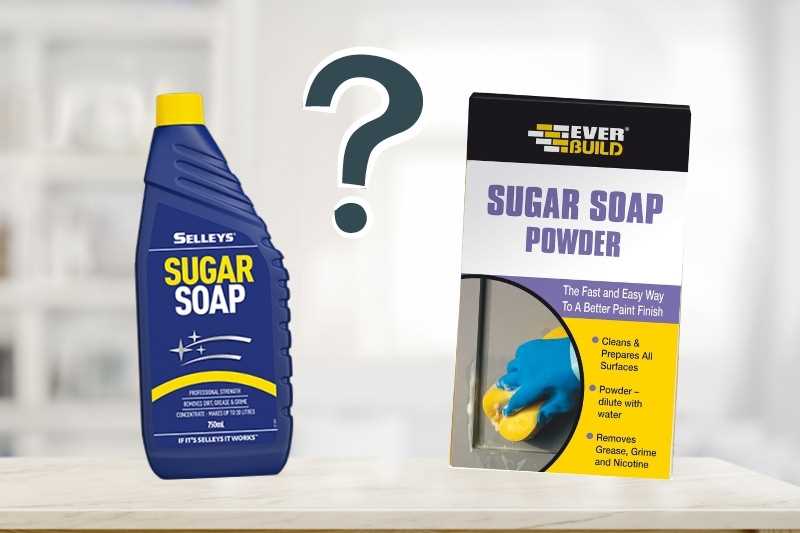
While sugar soap is generally safe to use, it is important to follow the manufacturer’s instructions and take proper safety precautions. Some key safety considerations include:
- Wearing gloves and protective eyewear when using sugar soap.
- Avoiding contact with skin and eyes. In case of contact, rinse thoroughly with water.
- Keeping sugar soap out of reach of children and pets.
- Avoiding ingestion of sugar soap. If swallowed, seek medical attention immediately.
- Using sugar soap in a well-ventilated area to avoid inhalation of fumes.
By following these safety precautions, sugar soap can be a effective and safe cleaner for a variety of cleaning tasks.
Understanding the Uses of Sugar Soap
Sugar soap is a versatile cleaning agent that is commonly used in household cleaning and preparation for paint jobs. It is a powerful cleaner that can effectively remove dirt, grime, grease, and stubborn stains from surfaces.
Cleaning Surfaces
One of the main uses of sugar soap is for cleaning surfaces such as walls, floors, and furniture. It can be used to remove layers of dirt and grime that have built up over time. Simply mix sugar soap with water according to the instructions on the packaging, apply it to the surface, and scrub with a sponge or brush. Rinse thoroughly with clean water afterwards.
Preparing for Painting

Sugar soap is also commonly used as a pre-painting cleaner. Before painting a surface, it is important to ensure that it is clean and free from dust, grease, and other contaminants. Sugar soap can effectively remove these substances, providing a clean and smooth surface for paint adhesion. Dilute the sugar soap in water and apply it to the surface using a sponge or rag. Scrub gently and rinse with clean water before proceeding with painting.
Cleaning Greasy Stains
Sugar soap can be particularly effective in removing greasy stains from surfaces. Its degreasing properties make it a good choice for cleaning kitchen cabinets, stove tops, and other areas prone to grease buildup. Apply the sugar soap directly to the stain and scrub gently with a sponge or brush. Rinse thoroughly with clean water afterwards to remove any residue.
Removing Wallpaper
Sugar soap can also be used to remove wallpaper. Mix the sugar soap with warm water and apply it to the wallpaper using a sponge or roller. Allow it to soak in for a few minutes to loosen the wallpaper adhesive. Then, gently peel off the wallpaper starting from the edges. Repeat the process if necessary to completely remove the wallpaper.
General Surface Cleaner
Aside from its specific uses, sugar soap is also a useful general surface cleaner. It can be used to clean windows, mirrors, tiles, and other surfaces throughout the home. Dilute the sugar soap in water according to the instructions and apply it to the surface using a sponge or cloth. Wipe clean and rinse with water for a streak-free finish.
Safety Precautions
- Always follow the instructions on the packaging for dilution ratios and usage.
- Wear rubber gloves to protect your hands when using sugar soap.
- Keep sugar soap out of reach of children and pets.
- Test the compatibility of sugar soap on a small, inconspicuous area before using it on a larger surface.
- Avoid mixing sugar soap with other cleaning products as this can cause dangerous chemical reactions.
By understanding the uses of sugar soap and following the proper precautions, you can effectively utilize this versatile cleaning agent for a variety of cleaning tasks in your home.
Exploring the Ingredients of Sugar Soap

Sugar soap is a versatile cleaning agent commonly used for preparing surfaces before painting or wallpapering. It is a popular choice for removing grease, grime, and dirt from various surfaces in both residential and commercial settings. Sugar soap is made up of several key ingredients that work together to provide effective cleaning and surface preparation.
1. Sodium Carbonate (Na2CO3)
- Sodium carbonate, also known as soda ash or washing soda, is an essential ingredient of sugar soap.
- It is used as a cleaning agent and helps to dissolve grease and dirt from surfaces.
- Sodium carbonate also aids in removing stubborn stains and acts as a pH regulator in the sugar soap solution.
2. Sodium Metasilicate (Na2SiO3)
- Sodium metasilicate is another key ingredient in sugar soap.
- It is a highly alkaline compound that acts as a surfactant, helping to break down grease and grime.
- Sodium metasilicate also assists in removing paint and wallpaper paste, making it an effective surface preparation agent.
3. Glycerol (C3H8O3)
- Glycerol is a natural ingredient found in sugar soap.
- It is a viscous liquid that helps to prevent the sugar soap solution from drying out too quickly.
- Glycerol also contributes to the overall cleaning efficacy of sugar soap by keeping the solution moist and facilitating the removal of dirt and stains.
4. Water (H2O)
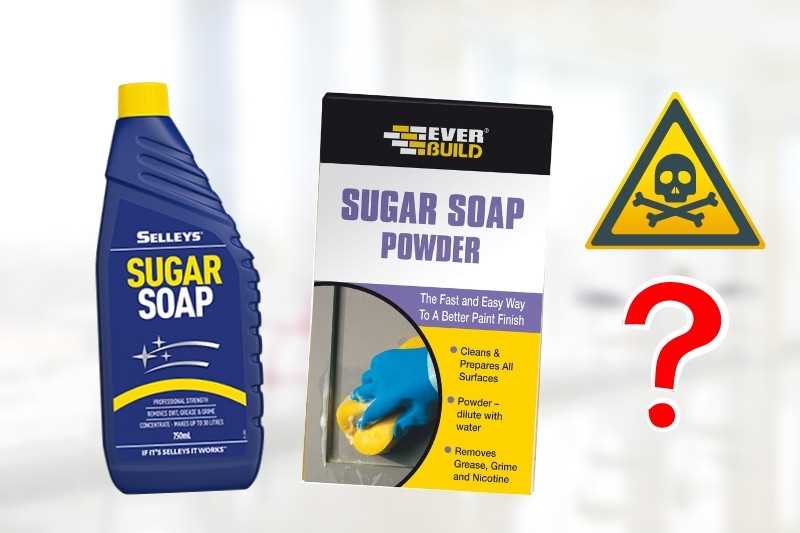
- Water is the most abundant ingredient in sugar soap.
- It acts as a solvent, allowing the other ingredients to dissolve and mix effectively.
- Water also helps to loosen dirt and debris from surfaces, making it easier to clean.
5. Additional Ingredients
- Depending on the brand and formulation, sugar soap may also contain other additives such as surfactants, fragrances, and preservatives to enhance its cleaning properties and extend its shelf life.
- It is important to read the product label and follow the manufacturer’s instructions for safe and effective use of sugar soap.
Overall, the combination of sodium carbonate, sodium metasilicate, glycerol, and water in sugar soap creates a powerful cleaning solution that effectively removes grease, grime, and dirt from surfaces. It is a versatile product that is commonly used for surface preparation in painting and wallpapering projects.
Safety Precautions When Using Sugar Soap
While sugar soap is a popular and effective cleaning product, it is important to take certain safety precautions when using it. By following these guidelines, you can ensure that you use sugar soap safely and minimize any potential risks or hazards.
1. Read the instructions
Before using sugar soap, carefully read and follow the instructions provided on the packaging. Different brands may have slightly different usage instructions, so it is important to familiarize yourself with the specific guidelines for the product you are using.
2. Wear protective gear
When using sugar soap, it is recommended to wear protective gear to prevent any potential skin or eye irritation. This may include gloves, goggles, and a long-sleeved shirt or apron to protect your skin from coming into direct contact with the product.
3. Test in a small, inconspicuous area
To ensure that the sugar soap does not cause any damage or discoloration to the surface you intend to clean, it is advisable to test it in a small, inconspicuous area first. Apply a small amount of sugar soap and wait for a few minutes to see if there are any adverse reactions or effects.
4. Adequate ventilation
When using sugar soap, make sure that the area is well-ventilated. Open windows or use fans to promote proper air circulation. This will help to minimize any potential inhalation of fumes or vapors that may be released during the cleaning process.
5. Keep out of reach of children and pets
Sugar soap should be stored in a secure location that is out of reach of children and pets. The product should be kept in its original packaging and away from food, drinks, and other household items to avoid accidental ingestion or misuse.
6. Dispose of properly
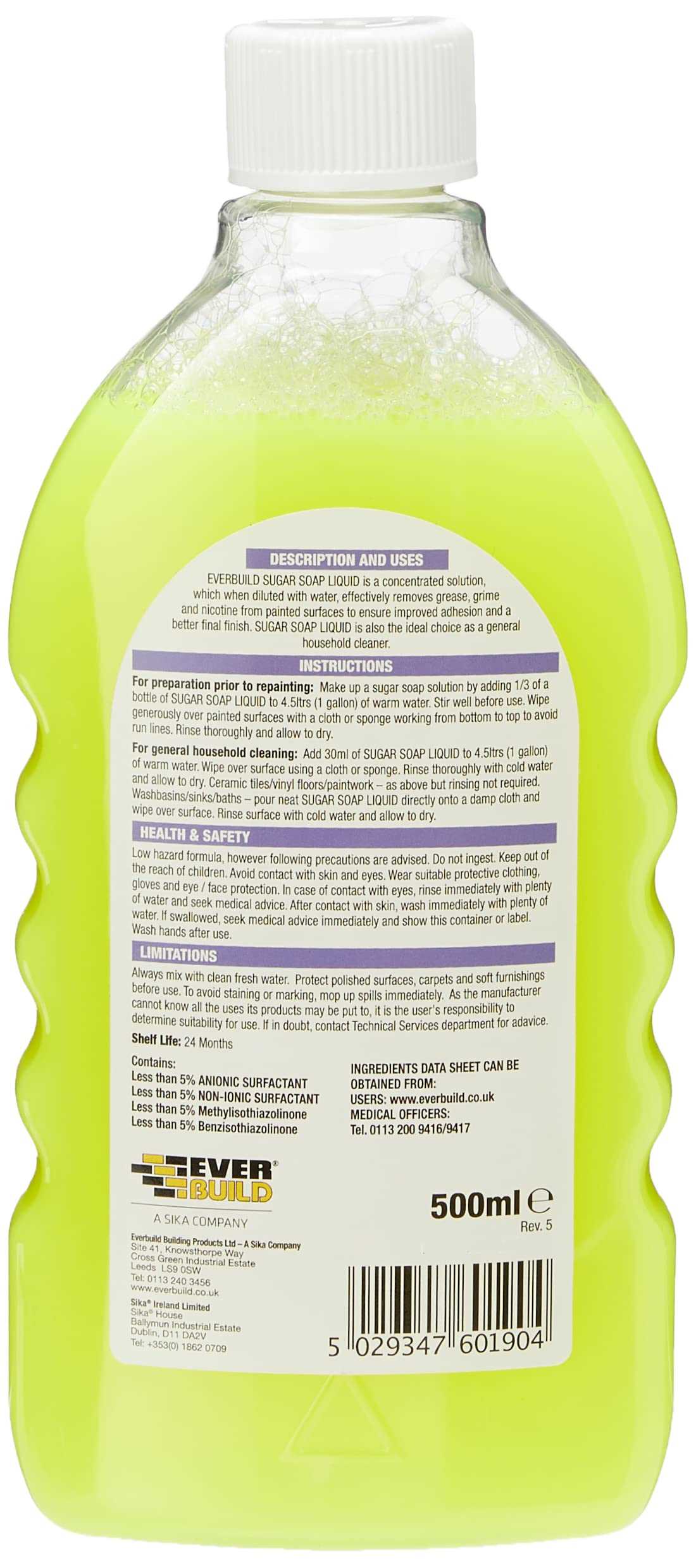
Once you have finished using sugar soap, be sure to dispose of any used or unused product properly. Follow the instructions on the packaging for appropriate disposal methods. Avoid pouring sugar soap down the drain or throwing it in the regular trash if it is not allowed, as it may be harmful to the environment.
By following these safety precautions, you can use sugar soap effectively and safely to clean a variety of surfaces in your home or workspace.
Why YourSite Recommends Sugar Soap for Cleaning
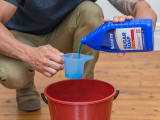
YourSite highly recommends using sugar soap for cleaning due to its effectiveness and versatility. Sugar soap is a cleaning solution that has proven to be incredibly useful across a range of cleaning tasks.
1. Effective Grease and Stain Removal
Sugar soap is known for its ability to remove tough grease and stains. Its powerful formula helps to break down and dissolve grease, making it easier to wipe away. Whether you’re tackling a greasy stove or a stained wall, sugar soap will be your go-to cleaning product.
2. Gentle on Surfaces

One of the great benefits of sugar soap is that it is gentle on surfaces. Unlike harsh chemicals that can damage delicate surfaces, sugar soap is safe to use on a wide variety of materials, including tiles, painted walls, and wood. You can clean with confidence, knowing that your surfaces will be well protected.
3. Versatile Cleaning Solution
Sugar soap is incredibly versatile and can be used for various cleaning tasks. Whether you need to clean your kitchen, bathroom, or outdoor areas, sugar soap can tackle it all. From removing mold and mildew to deep-cleaning your floors, sugar soap is a must-have cleaning solution for any household.
4. Easy to Use
Using sugar soap is straightforward and requires minimal effort. Simply dilute the solution according to the instructions on the packaging, apply it to the surface you want to clean, and scrub gently. Rinse away the sugar soap with water, and you’ll be left with a spotless and fresh surface.
5. Environmentally Friendly
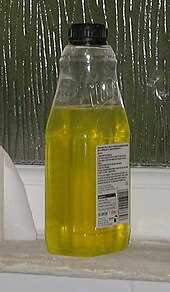
Choosing sugar soap for your cleaning needs is also an environmentally friendly choice. Sugar soap is biodegradable, meaning it breaks down naturally over time and leaves minimal impact on the environment. By using sugar soap, you’re making a conscious effort to reduce your carbon footprint.
6. Cost-Effective Option
Lastly, sugar soap is a cost-effective option for cleaning. It is affordable and readily available in most stores. With its powerful cleaning capabilities, you’ll only need a small amount of sugar soap to tackle even the toughest cleaning tasks, making it a budget-friendly choice.
Overall, YourSite highly recommends sugar soap as a cleaning solution due to its effectiveness, versatility, and environmentally friendly nature. Start using sugar soap today and experience the difference it can make in your cleaning routine.
FAQ
What is sugar soap made of?
Sugar soap is made of water, sodium carbonate, sodium phosphate, and sugar surfactants. It does not contain actual sugar.
Can I use sugar soap for cleaning walls?
Yes, sugar soap is commonly used for cleaning walls. It helps remove dirt, grease, and nicotine stains from painted surfaces.
Is sugar soap safe to use?
Yes, sugar soap is generally safe to use. However, it is recommended to wear gloves and ensure proper ventilation when using it, as it can cause skin and eye irritation.
What are the other uses of sugar soap?
Sugar soap can also be used for cleaning other surfaces such as floors, tiles, and kitchen appliances. It is effective in removing grease and grime.
Can sugar soap be used on wooden surfaces?
No, sugar soap is not suitable for use on wooden surfaces as it can damage the finish. It is best to use a mild detergent specifically designed for wood instead.











